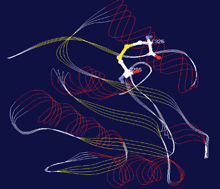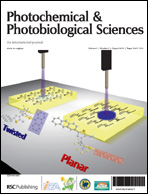Design and introduction of a disulfide bridge in firefly luciferase: increase of thermostability and decrease of pH sensitivity
Abstract
The thermal sensitivity and pH-sensitive spectral properties of firefly luciferase have hampered its application in a variety of fields. It is proposed that the stability of a protein can be increased by introduction of disulfide bridge that decreases the configurational entropy of unfolding. A disulfide bridge is introduced into Photinus pyralis firefly luciferase to make two separate mutant enzymes with a single bridge. Even though the A103C/S121C mutant showed remarkable thermal stability, its specific activity decreased, whereas the A296C/A326C mutant showed tremendous thermal stability, relative pH insensitivity and 7.3-fold increase of specific activity. Moreover, the bioluminescence emission spectrum of A296C/A326C was resistant against higher temperatures (37 °C). Far-UV CD analysis showed slight secondary structure changes for both mutants. Thermal denaturation analysis showed that conformational stabilities of A103C/S121C and A296C/A326C are more than native firefly luciferase. It is proposed that since A296 and A326 are situated in the vicinity of the enzyme active site microenvironment in comparison with A103 and S121, the formation of a disulfide bridge in this region has more impact on enzyme kinetic characteristics.


 Please wait while we load your content...
Please wait while we load your content...